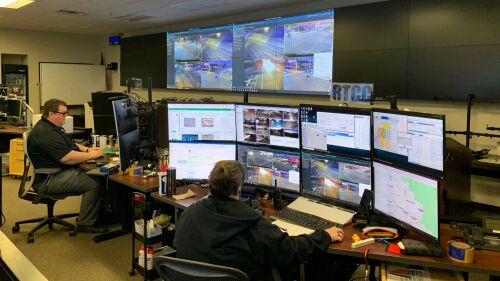By Kevin Konczal
I recently attended, along with my colleague Samantha Dorm, the National Real Time Crime Center Association’s conference in my hometown of Scottsdale, Arizona, where we presented a session detailing Lexipol’s PoliceGrantsHelp grant services and real time crime center funding tips.
This conference showcased the rapid advancements in law enforcement technology, and in light of the recent assassination attempt on President Trump on September 15 in Florida, it underscored just how vital these technologies have become.
In a dramatic turn of events, a suspect was tracked down thanks to the collaboration of a vigilant citizen and the capabilities of a real-time crime center equipped with license plate readers (LPRs). A concerned citizen, noticing suspicious activity — a man fleeing from the bushes outside of Trump’s golf course — quickly took a picture of the suspect’s license plate. That simple action set off a chain of events that highlights the importance of modern policing tools.
The license plate number was fed into an LPR system, which scans and identifies plates across regions. The real time crime center then used its network of cameras and data systems to track the suspect’s car as it traveled down the highway. By continuously monitoring and cross-referencing data from LPRs and surveillance cameras, they were able to follow the vehicle’s movements in real time, ultimately leading law enforcement directly to the suspect for a swift arrest.
Watch: Lexipol’s Sam Dorm discusses grant funding tips for real time crime centers.
This situation illustrates how technology is dramatically improving public safety. With crime rates fluctuating and threats constantly evolving, real time crime centers provide law enforcement with the tools they need to act quickly and decisively.
The use of LPRs and other surveillance tools empowers police forces not only to solve crimes faster but also to prevent potential threats from escalating. In this case, technology wasn’t just an asset — it was a critical factor in apprehending the suspect.
As we move further into the digital age, balancing privacy concerns with public safety remains a crucial conversation. However, the undeniable truth is that these technological advancements are helping keep communities safer, ensuring that law enforcement has the resources to respond swiftly when every second counts.
About the author
Kevin Konczal is Lexipol’s director of grant sales and has over three decades of law enforcement and technology experience.
Looking to navigate the complexities of grants funding? Lexipol is your go-to resource for state-specific, fully-developed grants services that can help fund your needs. Find out more about our grants services here.








